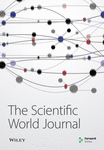Perils and Pitfalls Regarding Differential Diagnosis and Treatment of Primary Cutaneous Anaplastic Large-Cell Lymphoma
Abstract
Primary cutaneous anaplastic large-cell lymphoma (PC-ALCL), belonging to the CD30+ T-cell lymphoproliferative disorders (PCLPDs), is a rare T-cell lymphoma, presenting on the skin and characterized by very good prognosis and response to treatment in the majority of cases. Nevertheless, PC-ALCL must be distinguished from secondary skin lesions in systemic ALCL, which confer a poor prognosis, and other CD30+ PCLPDs, reactive conditions, or borderline cases. Given their rarity and heterogeneity, these entities represent diagnostic and therapeutic challenges, thus requiring a multidisciplinary approach and expertise to ensure appropriate diagnosis and management. There are several perils and pitfalls that exist regarding the differential diagnosis, the possible progression, and the treatment of PC-ALCL. Careful staging, correlation of clinical findings with histopathology and immunopathology, and thorough follow-up are essential in order to achieve a correct diagnosis and proper treatment of the disease.




